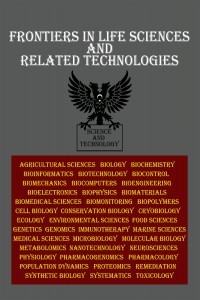Domates (Lycopsersicum esculentum L.)’te sentetik tohum üretiminde aljinat oranlarının depolama zamanına etkisi
Çimlenme gücü, depolama süresi, domates, sentetik tohum, sodyum aljinat
The effect of alginate ratios on storage time in the production of synthetic seeds in tomato (Lycopsersicum esculentum L.)
germination power, sodium algenate, storage time, synthetic seed, tomato,
___
- Babaoglu, M., Gurel, E., & Ozcan, S. (2001). Bitki biyoteknolojisi doku kulturu ve uygulamaları. (pp. 1-374). Selçuk Üniversitesi Yayınları.
- Bektas, E., Sokmen, A., & Cuce, M. (2011). Salep bitkisinin tohumlarından sentetik tohum üretimi. I. Salep Orkide Çalıştayı, 117-120.
- Danial, G. H., & Ibrahim, D. A. (2018) New protocol of Tomato (Lycopersicon esculentum Mill.) in vitro propagation, Kurdistan, Iraq. Innovaciencia, 6(1), 1-13.
- Das, A., Mahanta, M., Pramanik, B., & Gantait, S. (2021). Artificial seed development of selected anti-diabetic plants, their storage and regeneration: progress and prospect. In: Gantait S., Verma S. K., Sharangi A. B. (eds) Biotechnology of Anti-diabetic Medicinal Plants (pp. 409-436). Springer, Singapore.
- Erdem, M., & Uysal, H. (2021). Sentetik tohum. Frontiers in Life Sciences and Related Technologies, 2(2), 68-74.
- Gantait, S., & Mitra, M. (2019). Applications of synthetic seed technology for propagation, storage, and conservation of orchid germplasms. In: Faisal M., Alatar A. (eds) Synthetic Seeds (pp. 301-321). Springer, Cham.
- Gardi, T., Piccioni, E., & Standardi, A. (1999). Effect of bead nutrient composition on regrowth of stored vitro-derived encapsulated microcuttings of different woody species. Journal of Microencapsulation, 16(1), 13-25.
- Huda, A. K. M. N., Rahrnau, M., & Bari, M. A. (2007). Effect of carbon source in alginate bead on synthetic seed germination in eggplant (Solanum melongena L.). Journal of Plant Sciences, 2, 538-544.
- Lledó, M. D., Crespo, M. B., & Amo-Marco, J. B. (1996). Micropropagation of Limonium thiniense Erben (Plumbaginaceae) using herbarium material. Botanic Gardens Micropropagation News (United Kingdom), 2(2), 18-21.
- Nongdam, P. (2016). Development of synthetic seed technology in plants and its applications: a review. International Journal of Current Science Research and Review, 19(4), 86-101.
- Nugrahani, P., Moeljani, I. R., & Lydiana, I. (2018). Encapsulation and germination of synthetic seeds of Chrysanthemum. Proceedings of the International Conference on Science and Technology (ICST 2018), Atlantis Press. 126-129.
- Onishi, N., Sakamoto, Y., & Hirosawa, T. (1994). Synthetic seeds as an application of mass production of somatic embryos. Plant Cell, Tissue and Organ Culture, 39(2), 137-145.
- Ozden-Tokatli, Y., De Carlo, A., Gumusel, F., Pignattelli, S., & Lambardi, M. (2008). Development of encapsulation techniques for the production and conservation of synthetic seeds in ornamental plants. Propagation of Ornamental Plants, 8(1), 17-22.
- Parrot, W. A., Merkle, S. A., & Williams E. G. (1993). Somatic embryogenesis: potential for usein propagation and gene transfer systems. In: Murray D. R. (ed) Advanced Methods in Plant Breeding and Biotechnology (pp. 158-200). International Press, UK.
- Parrott, W. A., & Bailey, M. A. (1993). Characterization of recurrent somatic embryogenesis of alfalfa on auxin-free medium. Plant cell, Tissue and Organ Culture, 32(1), 69-76.
- Patel, A. V., Pusch, I., Mix-Wagner, G., & Vorlop, K. D. (2000). A novel encapsulation technique for the production of artificial seeds. Plant Cell Reports, 19(9), 868-874.
- Porter, J. E. (2008). Analysis of tomato synthetic seeds for the development of an optimized encapsulation system, Master Thesis, (pp. 1-45). West Virginia University.
- Reddy, M. C., Murthy, K. S. R., & Pullaiah, T. (2012). Synthetic seeds: A review in agriculture and forestry. African Journal of Biotechnology, 11(78), 14254-14275.
- Saiprasad, G. V. S., & Polisetty, R. (2003). Propagation of three orchid genera using encapsulated protocorm-like bodies. In Vitro Cellular & Developmental Biology-Plant, 39(1), 42-48.
- Sakamoto, Y., Mashiko, T., Suzuki, A., Kawata, H., & Iwasaki, A. (1992). Development of encapsulation technology for synthetic seeds. International Symposium on Transplant Production Systems, 319, 71-76.
- Standardi, A., & Piccioni, E. (1998). Recent perspectives on synthetic seed technology using nonembryogenic in vitro-derived explants. International Journal of Plant Sciences, 159(6), 968-978.
- Zhang, X., Fowler, S. G., Cheng, H., Lou, Y., Rhee, S. Y., Stockinger, E. J., & Thomashow, M. F. (2004). Freezing‐sensitive tomato has a functional CBF cold response pathway, but a CBF regulon that differs from that of freezing‐tolerant Arabidopsis. The Plant Journal, 39(6), 905-919.
- Yayın Aralığı: Yılda 3 Sayı
- Başlangıç: 2020
- Yayıncı: İbrahim İlker ÖZYİĞİT
Ahmet GÖKCAN, Hacer Handan DEMİR, Cevriye Ebrar AKTAŞ, Rabia GÜR, Hatice UYĞUN, Göksel DEMİR
CRISPR/Cas9 teknolojisi ve gıda alanında kullanımı
Ayşegül BÖLÜKBAŞ, Ali GÜCÜKOĞLU
Citric acid production using rotating biodisc reactor (RBR)
Genotype × environment interaction and adaptation of cowpea genotypes across six planting seasons
Abiola AJAYİ, Alaba GBADAMOSİ, Oluwatoyin OSEKİTA, Babatunde TAİWO, Ato Babawole FAWIBE, Iyanu ADEDEJİ, Temitope OMİSAKİN
